Cysts and tumors of the ovaries
Often the terms cyst, cyst, ovarian tumor are practically synonymous for the clinician and mean the presence of an abnormal formation (outgrowth) on the ovary. The fact is that in international classifications there are concepts of ADNEXAL MASS, OVARIAN MASS, OVARIAN CYST – they are all interchangeable, each cystic ovarian formation can be called one of three terms.
An ovarian tumor implies the presence of a cyst containing a dense component. The cyst itself is a "bubble" on the surface or inside the ovary, filled with fluid. Even for modern methods of intrascopy (ultrasound, CT, MRI), and therefore for an oncogynecologist, these formations are distinguished only by the nature of the contents.
There are many classifications in terms of histology, size, and functionality, but classification by degree of malignancy is quite universal and meets the need for information about the disease of both the doctor and the patient.
Types of ovarian cysts
Ovarian cysts and tumors are divided into three types:
-
Benign formations and cysts
-
Borderline ovarian formations
Benign formations (cysts) ovaries are more common in young women and may be associated with a disease such as endometriosis (when cells of the endometrium, the inner layer of the uterine wall, grow outside this layer), and may also be a consequence of menstrual irregularities.
Borderline ovarian tumors are more common in women after the age of 30. Under a microscope, cysts can be identified as malignant, but they have a clinical course that more closely resembles benign formations. Borderline tumors in rare cases cause the spread of metastases (dropouts), but often provoke relapses (when after a while the tumor returns to the ovary or appears in another place) – in these cases, repeated operations are necessary. Chemotherapy is not effective in this case.
Malignant ovarian tumors (ovarian cancer) occurs in most cases in women after menopause. Unfortunately, 80% of patients go to the doctor only with symptoms at the third or fourth stage of the disease. In these cases, the most radical operations are performed, aimed at removing all tumor nodes from the abdominal cavity, after surgery (in some cases, before surgery), chemotherapy is performed. Despite the late stage of treatment, 30-40% of patients have a chance of a complete cure.
How are ovarian cysts (formations, tumors) detected?
Some women go to the gynecologist with pain in the lower abdomen. Sometimes these pains are cyclical, in some cases they are permanent. In some cases, cysts and ovarian formations are detected accidentally during preventive ultrasound examinations.
What are cancer markers? What are they used for?
Cancer markers are specific substances that occur in the biological fluids of patients as a result of the vital activity of cancer cells. The most frequently studied cancer marker in the blood for ovarian tumors is CA-125. It is often detected when cysts or ovarian growths are found. Unfortunately, the CA-125 lacks specificity. It can increase several times with benign processes in the abdominal cavity (uterine fibroids, endometriosis, benign ovarian cysts, colitis, and others), while half of women with malignant ovarian tumors in the early stages, CA-125 levels are normal. Therefore, the definition of CA-125 is often not used to determine the malignancy of a tumor before surgery, but in combination with ultrasound data, in some cases it can become a significant diagnostic indicator for a gynecologist.
Does the cyst always require removal?
Perhaps only functional cysts (cysts that form as a result of the menstrual cycle and failed ovulation) deserve to be monitored by a gynecologist in dynamics. Functional cysts should disappear after 1-2 menstrual cycles. If this does not happen, the cyst is not functional, but pathological.
Polycystic ovaries (a multitude of small cysts on the periphery of the ovary) may be a variant of the norm, as well as be a sign of one of the components of polycystic ovary syndrome. These small cysts also in most cases do not require surgical treatment, unless they are combined with infertility or menstrual disorders.
Polycystic ovaries are actually found in 15-20% of perfectly healthy women and do not require treatment. In other cases, they are included in the clinically significant polycystic ovary syndrome (hyperandrogenism, cycle disorders). All other cysts and ovarian formations are considered pathological and require surgical removal.
What is the purpose of the operation?
It is possible to accurately determine whether a cyst is benign or malignant (borderline) only after removing the cyst or ovary with a cyst during surgery. All methods of preoperative diagnosis (ultrasound, cancer markers, analysis of symptoms) are approximate and do not give a 100% answer to the question of malignancy.
Some cysts can also cause the ovary to twist when its blood supply stops and the ovary dies, which is an indication for emergency surgery. Some cysts can rupture involuntarily, sometimes leading to significant bleeding (ovarian apoplexy), which usually also requires emergency surgery.
Is it possible to preserve the ovary itself, on which the cyst has appeared, or does it need to be completely removed?
To a greater extent, it depends on the nature of the cyst, the age of the woman, and a number of other factors. Speaking of benign ovarian cysts (endometrioma, cystadenoma, follicular cyst, etc.) with not very large sizes, it is possible to preserve the ovary and remove only the cyst with a capsule in order to avoid recurrence.
If the cyst looks suspicious during the operation from the point of view of oncology, it is safer to remove the entire ovary along with the cyst, plunging it into a plastic bag directly in the abdomen, and then remove it – it is very important not to "tear" the cyst in the abdomen, that is, so that its contents do not enter the patient's abdominal cavity, as this it may cause problems in the future.
Your gynecologist should definitely warn you about the possible need to remove the entire ovary with a cyst (tumor) and that this decision can be made by the surgeon during surgery, although in most cases the ovary can be preserved.
In some cases, it is necessary to remove the cyst along with the ovary. In this case, the surgeon sends it for an urgent histological examination, the results of which help to quickly make a decision on the required amount of surgery immediately during the operation.
Are there any chances of pregnancy and childbirth with the removal of one of the ovaries?
One ovary can fully perform its functions, including producing sex hormones, ensuring a normal menstrual cycle, as well as monthly egg production. If the fallopian tube of the preserved ovary is passable, then the chances of getting pregnant and having a baby are the same as for women with two ovaries.
Treatment of ovarian cysts
If there is a cyst (formation) The ovary is not too large, it is less than 7-9 centimeters in diameter and does not cause any special suspicion of its malignancy according to ultrasound results – a minimally invasive procedure is performed – ovarian laparoscopy.
It is worth noting that the vast majority of ovarian cysts fall into this category and are treated with laparoscopic surgery, which provides excellent cosmetic results, minimal blood loss during surgery and rapid recovery. If the cyst is too large and cannot be safely removed from the abdominal cavity through small laparoscopic openings, abdominal surgery is performed.
If, according to ultrasound or computed tomography (CT) or blood cancer markers, there is a strong suspicion that the formation is malignant, in this case, abdominal surgery is performed.
Laparoscopic surgery is advisable for a number of atypical cysts and ovarian formations. In other cases, laparoscopy is used only to diagnose ovarian formation, and then proceeds to abdominal surgery.
Are there non-surgical methods of treating cysts (formations) ovaries?
Apart from functional cysts and polycystic ovaries, other types of cysts and formations are treated surgically. There is a misconception that some hormonal drugs promote the resorption of cysts, but there is no evidence of the effectiveness of this method in the medical literature.
In some cases, the cyst resolves on its own (a functional cyst), but this usually occurs spontaneously, and not due to the use of hormonal drugs. The use of hormonal (contraceptive) drugs is really justified only in one case - to prevent the re-formation of functional and other benign ovarian cysts. Moreover, the use of hormonal contraceptives for 5 years or more (in total over a woman's lifetime) reduces the risk of ovarian cancer by 40%.
Which doctor should I contact for ovarian cysts?
If an ultrasound scan reveals an ovarian cyst, you should contact a gynecologist who specializes in laparoscopic surgery. Even if the cyst turns out to be functional, the gynecologist-endosurgeon will continue to monitor the patient for several months until the cyst resolves on its own. If the cyst is not typical or there are suspicions of a borderline or malignant tumor, in this case, you should contact an oncogynecologist, who will prescribe additional studies and perform laparoscopic or abdominal surgery.
EMC oncogynecology surgeons have appropriate surgical training, extensive surgical experience in oncogynecology and related disciplines, state-of-the-art modern equipment, and, most importantly, an understanding of the need for complete radical tumor removal during surgery.
The main task of the EMC Department of Gynecology and Oncogynecology is to provide surgical and therapeutic medical care for gynecological and oncogynecological diseases in a short time, as effectively as possible, painlessly and with minimal side effects. The work is conducted in accordance with the standards of evidence-based medicine practiced in the USA and Western European countries.
The staff of the department's doctors are oncogynecologists, gynecologists, urogynecologists, who have not only years of practice in the best clinics in Russia, the USA, Europe and Israel, but also powerful theoretical training, which is constantly being improved thanks to the participation of doctors in international congresses and conferences on the specialty.
The head of the department is an experienced oncogynecologist and obstetrician-gynecologist, certified by the US National Board Certified in Obstetrics and Gynecology and oncogynecology, as well as a certified specialist in obstetrics and gynecology and oncology in Russia, Vladimir Nosov. The EMC clinic is one of the few in Moscow, the level of medical services of which meets international standards.
Why the EMC
The first and only clinic in Russia, created in the image of the world's leading clinics
EMC is a multidisciplinary center offering patients a high level of medical services and a personalized approach
Worldwide recognition and awards
 Learn more
Learn more
Worldwide recognition and awards
 Certificates and licenses
Certificates and licenses
Make an appointment for a consultation
Specify your contacts and we will contact you to clarify the details
and new products of the EMC
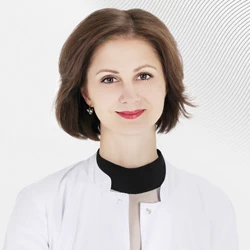
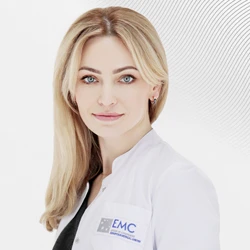
.webp)
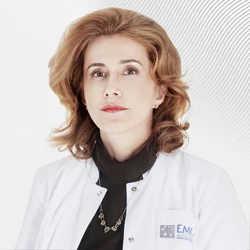


.webp)
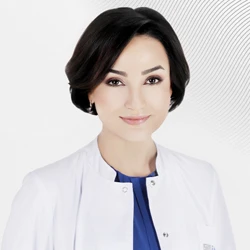
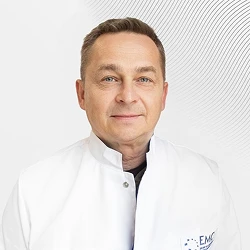

.webp)
